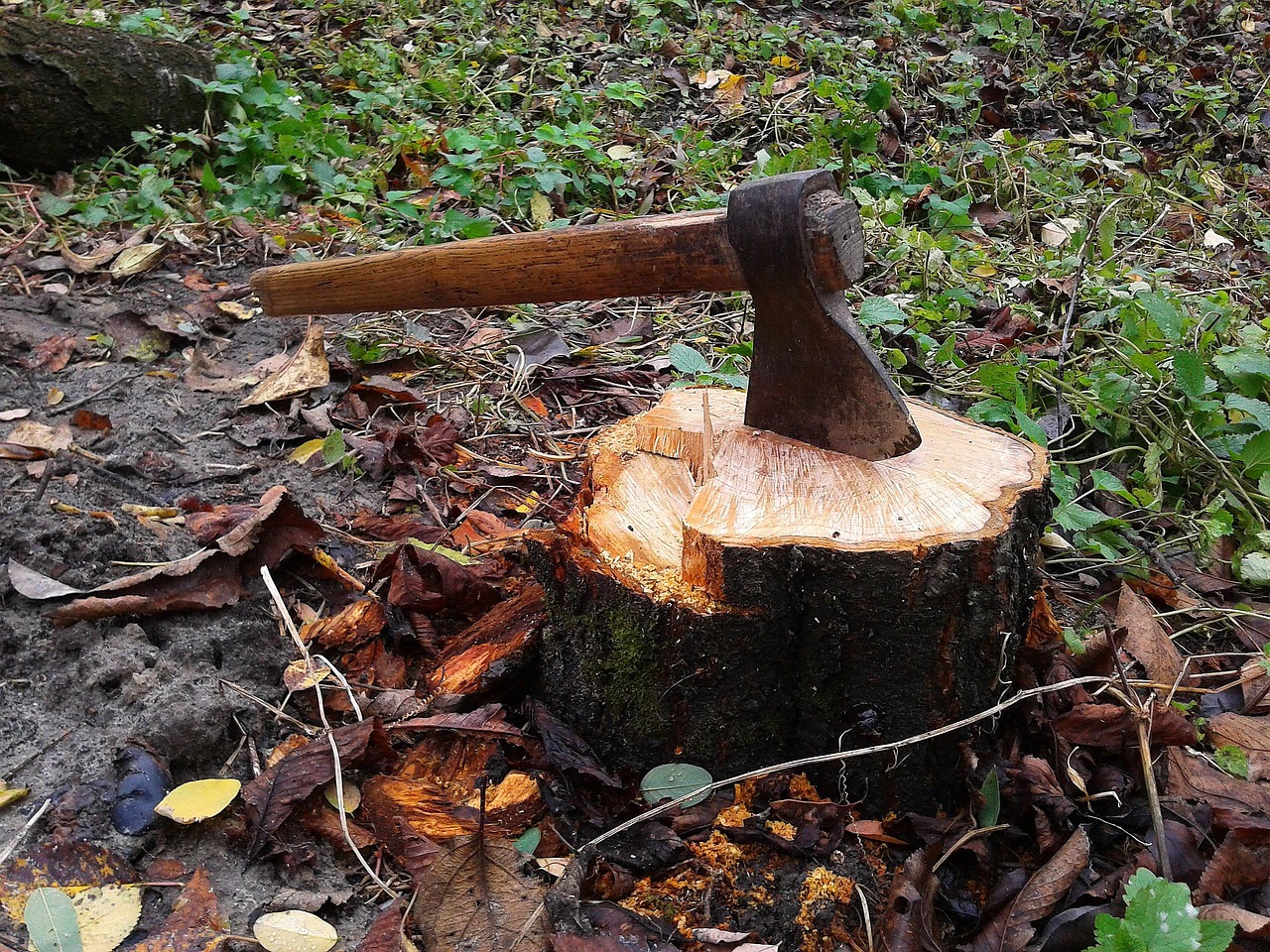The phrase “The axe forgets, the tree remembers” signifies the disparity between the perpetrator and the victim in a situation of harm. While the one who inflicts pain may move on easily, the one who suffers often carries the scars and memories of that experience long after.
Understanding the Wisdom Behind the Saying
This proverb has its roots in various cultures, highlighting the enduring impact of trauma and pain. It speaks to a universal truth about human experiences. Often, individuals who cause harm may not fully grasp the consequences of their actions. In contrast, those who endure hardship often live with their memories and the emotional weight of their experiences.

The phrase is particularly powerful when considering relationships, whether personal or societal. It reminds us to be mindful of how our actions affect others. The axe may symbolize those who choose to act without consideration, while the tree represents those who must bear the aftermath of such actions.
In many communities, this saying serves as a cautionary reminder. It encourages empathy and awareness of how one’s behavior can leave lasting impressions on others. Understanding this dynamic can foster more compassionate interactions and promote healing.
Historical Context
The origin of this proverb can be traced back to African cultures, where storytelling serves as a crucial method for imparting wisdom. Proverbial sayings like this one are prevalent in many African languages, each carrying deep moral lessons. Through oral traditions, these sayings have been passed down through generations, evolving in meaning but retaining their core message.

In different contexts, similar expressions exist across cultures. For example, in Western literature, there are various sayings that capture the essence of accountability and memory. This demonstrates that the theme of remembering pain and suffering is a common thread in human history and storytelling.
Key Themes
- Memory: The importance of remembering past experiences and their impact on individuals.
- Accountability: The need for individuals to recognize the consequences of their actions.
- Empathy: Encouraging understanding and compassion towards those who have suffered.
- Cultural Significance: The role of proverbs in preserving cultural wisdom and values.
The Psychological Impact
Psychologically, this proverb highlights the concept of trauma. Those who experience significant emotional or physical pain often find it difficult to forget. The tree, representing the victim, endures a lasting impression that can affect their mental health. This can lead to various outcomes, including anxiety, depression, or a heightened sense of vigilance in future situations.
On the other hand, the axe may represent individuals who act without awareness or remorse. They may forget their actions because they do not face any direct consequences. This creates a cycle where harm is perpetuated without accountability. Understanding this psychological divide is essential for fostering a more supportive community.

Real-Life Applications
The phrase “The axe forgets, the tree remembers” can be applied in numerous real-life scenarios. Here are some examples:
- Personal Relationships: In friendships or romantic partnerships, one person may hurt another through careless words or actions. While the offender may move on quickly, the hurt party may take longer to heal.
- Workplace Dynamics: In professional settings, bullying or unfair treatment can create lasting scars for those affected. The perpetrator might not understand the long-term effects on their colleagues.
- Social Justice: In broader societal issues like systemic racism or inequality, those who suffer often bear deep emotional and psychological wounds, while those in power may forget or ignore these histories.
This understanding encourages individuals to be more mindful of their words and actions. It opens pathways for dialogue and healing, promoting a more empathetic society where all voices are acknowledged and valued.
Exploring the Emotional Aftermath
The emotional aftermath of harm can be profound. The saying “The axe forgets, the tree remembers” encapsulates the enduring scars left on victims. Understanding these emotional repercussions is vital for fostering healing and growth. This section delves into the various emotional responses that individuals may experience after enduring pain.
Common Emotional Responses
When individuals experience trauma or emotional pain, their responses can vary widely. Some common emotional reactions include:

- Sadness: Many victims feel a deep sense of sadness. This emotion can linger long after the event, affecting their daily lives and relationships.
- Anger: Anger often arises as a natural reaction to feeling wronged. Victims may struggle with this emotion, which can lead to further conflict if not addressed.
- Fear: Those who have been harmed may develop fear or anxiety about similar situations occurring again. This hyper-vigilance can impact their ability to trust others.
- Isolation: Some individuals may withdraw from social interactions, feeling unable to connect with others who have not shared similar experiences.
- Resilience: Conversely, some individuals emerge stronger, using their experiences to foster personal growth and resilience.
Each emotional response is valid and highlights the complexity of human experiences. Recognizing these feelings is crucial for both the victim and those around them.
The Role of Memory in Healing
Memory plays a significant role in the healing process. For many, recalling painful experiences can feel overwhelming. However, memory can also facilitate healing and understanding:
Adaptive vs. Maladaptive Memories
Memories can be categorized into two types: adaptive and maladaptive. Understanding these categories helps in processing emotional pain.
| Type of Memory | Description | Impact on Healing |
|---|---|---|
| Adaptive Memories | These memories help individuals learn and grow from their experiences. They often include insights gained from hardship. | Can promote resilience and constructive coping strategies. |
| Maladaptive Memories | These memories focus on pain and suffering without leading to growth. They may cause individuals to relive the trauma repeatedly. | Can hinder healing and lead to chronic emotional distress. |
Acknowledging the distinction between these memory types is essential for effective healing. Individuals may benefit from therapy or support groups that encourage adaptive processing of their experiences.
Coping Mechanisms for Healing
Finding ways to cope with emotional pain is crucial for those impacted by harm. Various coping mechanisms can aid in the healing process:
Healthy Coping Strategies
- Therapy: Speaking with a mental health professional can provide guidance and support. Therapists offer tools to process trauma and develop healthier coping mechanisms.
- Support Groups: Connecting with others who have shared similar experiences can foster a sense of community. Support groups allow individuals to share their stories and find comfort in understanding.
- Journaling: Writing about one’s experiences can serve as a therapeutic outlet. Journaling helps clarify feelings and promotes self-reflection.
- Meditation and Mindfulness: Practicing mindfulness can help individuals stay grounded in the present moment. This practice can reduce anxiety and improve emotional regulation.
- Creative Expression: Engaging in art, music, or other creative outlets allows individuals to express their feelings non-verbally, facilitating healing.
Implementing these coping strategies can greatly assist individuals in navigating their emotional journeys. Each person’s path will differ, depending on their unique experiences and needs.
The Importance of Empathy in Society
The broader implications of “The axe forgets, the tree remembers” extend into societal attitudes towards trauma and healing. Empathy plays a vital role in how communities respond to individuals who have suffered harm.
Cultivating Empathy
Fostering an empathetic society requires active efforts from all individuals. Here are some ways to cultivate empathy:
- Education: Teaching empathy in schools encourages children to understand others’ feelings from a young age, creating a more compassionate future generation.
- Open Dialogue: Encouraging discussions about trauma and its effects helps normalize these experiences, reducing stigma.
- Community Involvement: Volunteering with organizations that support marginalized communities fosters understanding and connection.
- Listening: Practicing active listening when someone shares their story shows care and validation for their experience.
Cultivating empathy not only benefits individuals who have experienced harm but also strengthens societal bonds, leading to healthier communities overall.
The Impact of Trauma on Relationships
Understanding the phrase “The axe forgets, the tree remembers” also involves examining its effects on interpersonal relationships. Trauma can alter how individuals connect with others, influencing trust, communication, and emotional intimacy. This section explores how trauma impacts relationships and offers insights into rebuilding connections after harm.
Effects of Trauma on Trust
Trust is a fundamental component of any healthy relationship. However, experiencing trauma can severely disrupt an individual’s ability to trust others. This disruption manifests in various ways:
- Hyper-vigilance: Individuals may become overly cautious, constantly assessing their surroundings for potential threats. This heightened state of awareness can strain relationships, as partners or friends may feel the need to prove their reliability.
- Fear of Vulnerability: Survivors of trauma may hesitate to open up emotionally. The fear of being hurt again can create barriers to intimacy, making it challenging to form deep connections.
- Misinterpretation of Intentions: Trauma can lead individuals to misread social cues, perceiving neutral actions as threatening. This can result in miscommunication and conflict.
- Withdrawal: Some individuals may retreat from relationships altogether, believing that isolation is safer than risking further pain.
These challenges highlight the importance of patience and understanding from loved ones. Rebuilding trust takes time and requires consistent support.
Rebuilding Connections
Despite the challenges posed by trauma, it is possible to rebuild and strengthen relationships. Here are several strategies that can help:
- Open Communication: Encourage open dialogues about feelings, fears, and experiences. Creating a safe space for discussion can foster understanding and healing.
- Pace the Relationship: Allow the relationship to develop at a comfortable speed for both parties. Gradual progress helps build trust without overwhelming the individual affected by trauma.
- Practice Empathy: Being empathetic involves recognizing the other person’s feelings and experiences. This validation can significantly impact their healing journey.
- Establish Boundaries: Clear boundaries help create a sense of safety. Discussing and respecting personal limits can foster mutual respect and understanding.
- Seek Professional Support: Couples or family therapy can provide tools and strategies to navigate complex emotions and rebuild connections effectively.
These strategies emphasize the importance of intentionality in nurturing relationships affected by trauma. With commitment and effort from both parties, healing is possible.
The Role of Cultural Context in Understanding Trauma
The understanding of trauma and its implications varies across cultures. Different societies have unique ways of processing pain and memory, affecting how individuals relate to the phrase “The axe forgets, the tree remembers.” This section explores the cultural dimensions of trauma and memory.
Cultural Perspectives on Trauma
Cultural beliefs shape how individuals experience and express trauma. Here are some factors that influence these perspectives:
- Collectivism vs. Individualism: In collectivist cultures, community support plays a crucial role in healing. Sharing experiences within a group can foster resilience. Conversely, individualistic cultures may emphasize personal coping mechanisms.
- Spiritual Beliefs: Many cultures incorporate spiritual practices in healing. Rituals, prayer, or meditation can provide comfort and a sense of connection during difficult times.
- Historical Trauma: Groups that have experienced systemic oppression often carry collective memories of trauma. Understanding this historical context is essential for addressing contemporary issues related to identity and healing.
- Cultural Norms around Expression: Some cultures encourage open discussions about feelings, while others promote stoicism. These norms influence how individuals process their emotions and seek support.
Acknowledging these cultural contexts is vital for providing appropriate support and fostering understanding among diverse communities.
The Importance of Storytelling
Storytelling is a powerful tool for processing trauma across cultures. It allows individuals to share their experiences and find meaning in their pain. Here are some ways storytelling aids in healing:
- Validation of Experiences: Sharing stories provides validation, allowing individuals to feel seen and heard in their suffering.
- Coping Mechanism: Articulating pain through storytelling can serve as a therapeutic outlet, helping individuals process emotions.
- Connection with Others: Sharing narratives fosters connections among individuals who have faced similar experiences, promoting a sense of community.
- Paving the Way for Change: Public storytelling can raise awareness about issues related to trauma, encouraging societal change and healing.
The practice of storytelling underscores the importance of memory in both personal healing and communal understanding. By sharing their narratives, individuals contribute to a larger dialogue about trauma and resilience.
The Role of Forgiveness in Healing
Forgiveness is a complex but essential component in the journey of healing from trauma. The phrase “The axe forgets, the tree remembers” also speaks to the idea of letting go and moving forward. Forgiveness does not mean condoning harmful actions; rather, it involves releasing the hold that past traumas have on an individual. This section examines the significance of forgiveness in the healing process.
Understanding Forgiveness
Forgiveness can take various forms and may differ from person to person. It is often misunderstood as a simple act of saying “I forgive you.” However, the process is much deeper and can involve:
- Personal Reflection: Individuals often need to reflect on their feelings and the impact of the harm they’ve experienced before they can consider forgiveness.
- Empathy for the Perpetrator: Understanding the circumstances that led to another’s actions can sometimes facilitate forgiveness, even when it feels challenging.
- Letting Go of Resentment: Holding onto anger and resentment can have detrimental effects on mental health. Forgiveness allows individuals to release these burdens.
- Self-Forgiveness: Sometimes, individuals may need to forgive themselves for perceived shortcomings or for how they handled a situation.
Forgiveness is a personal journey and varies widely among individuals. It is essential to approach it at one’s own pace, without external pressure or judgment.
The Benefits of Forgiveness
Engaging in forgiveness can lead to numerous psychological benefits, including:
- Improved Mental Health: Studies show that those who practice forgiveness experience lower levels of anxiety, depression, and stress.
- Enhanced Relationships: Forgiveness can pave the way for healthier interactions, reducing conflict and fostering emotional intimacy.
- Emotional Freedom: Letting go of past grievances allows individuals to move forward, creating space for new experiences and relationships.
- Increased Resilience: Individuals who forgive often develop greater emotional resilience, enabling them to cope with future challenges more effectively.
These benefits highlight how forgiveness can serve as a valuable tool in the healing process, contributing positively to both mental and emotional well-being.
Navigating the Future with Awareness
As individuals reflect on their experiences and the implications of “The axe forgets, the tree remembers,” it is essential to look towards the future with awareness. Building a more understanding society requires collective efforts rooted in empathy, compassion, and active engagement. Here are some ways to foster this awareness:
- Continuous Learning: Educating oneself about the experiences of others can foster empathy and understanding. This includes reading literature, attending workshops, or participating in community discussions.
- Advocacy: Supporting initiatives that aim to address systemic issues related to trauma can lead to meaningful change. Advocacy work helps amplify voices that need to be heard.
- Mindfulness Practices: Engaging in mindfulness practices can help individuals remain present. This awareness can enhance one’s ability to respond thoughtfully rather than react impulsively in challenging situations.
- Cultivating Compassionate Communities: Being part of a community that values compassion encourages individuals to support one another in their healing journeys.
Emphasizing these aspects can empower individuals and communities to navigate their futures more thoughtfully and empathetically.
Final Thoughts
The saying “The axe forgets, the tree remembers” serves as a profound reminder of the disparities between those who inflict pain and those who endure it. As we explore the emotional complexities involved in trauma, trust, relationships, and forgiveness, it becomes clear that healing is a multifaceted journey. Understanding the long-lasting effects of actions on others urges us to cultivate empathy and compassion in our interactions.
Through storytelling, forgiveness, and awareness, we can foster deeper connections with ourselves and others. By acknowledging the scars carried by those who have suffered, we contribute to a more compassionate society where healing is possible. The path forward lies in our collective commitment to understanding, supporting, and uplifting one another as we navigate our shared human experiences.
